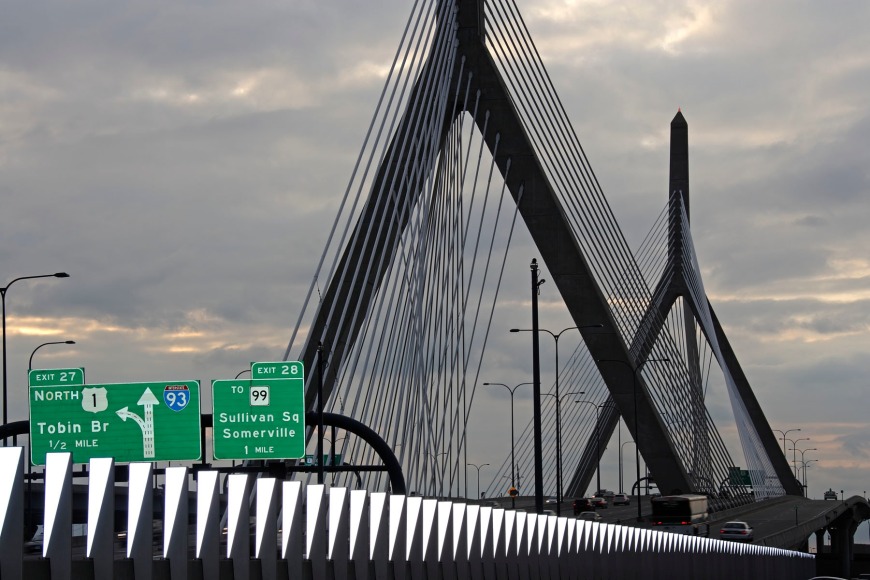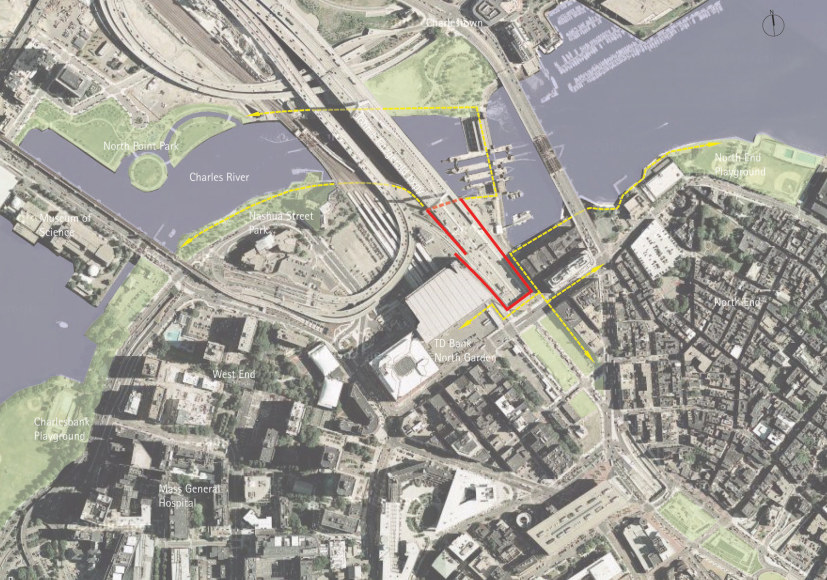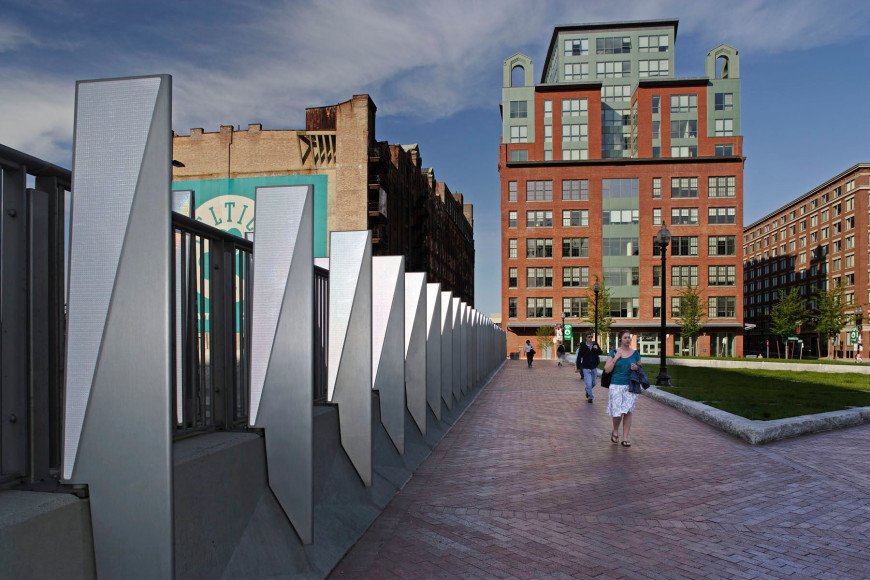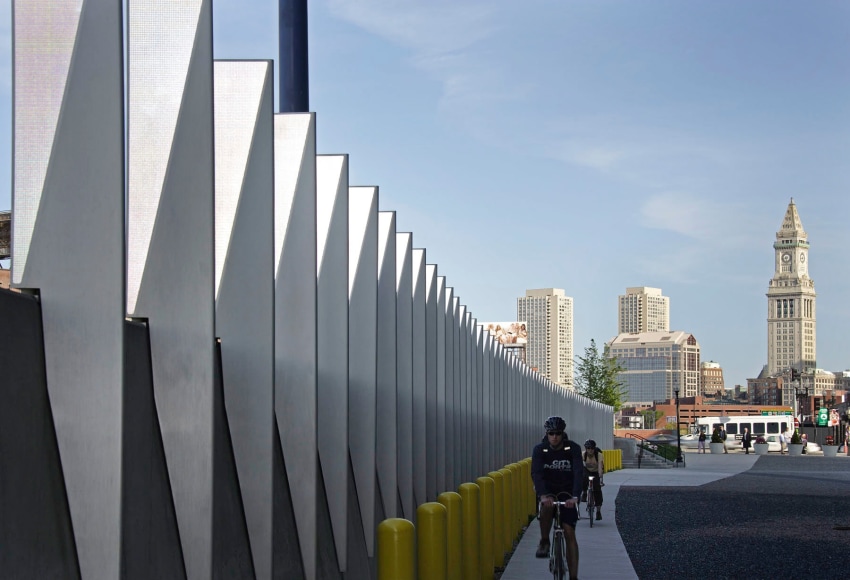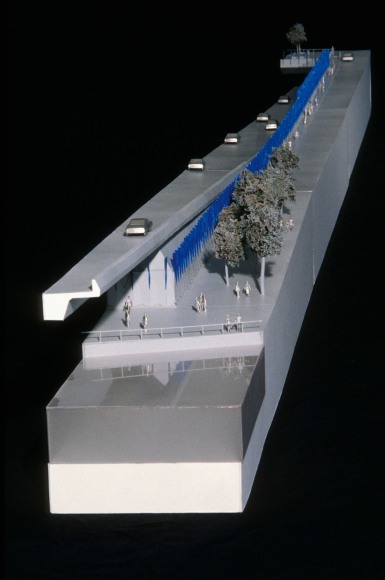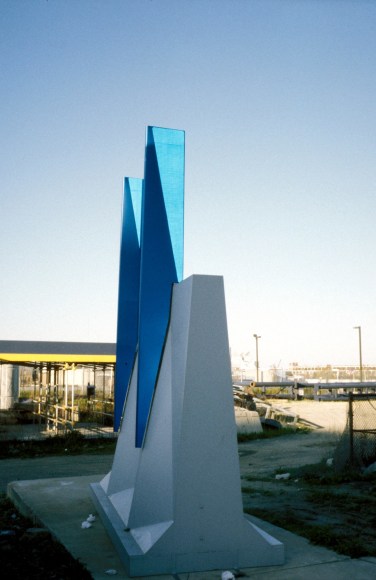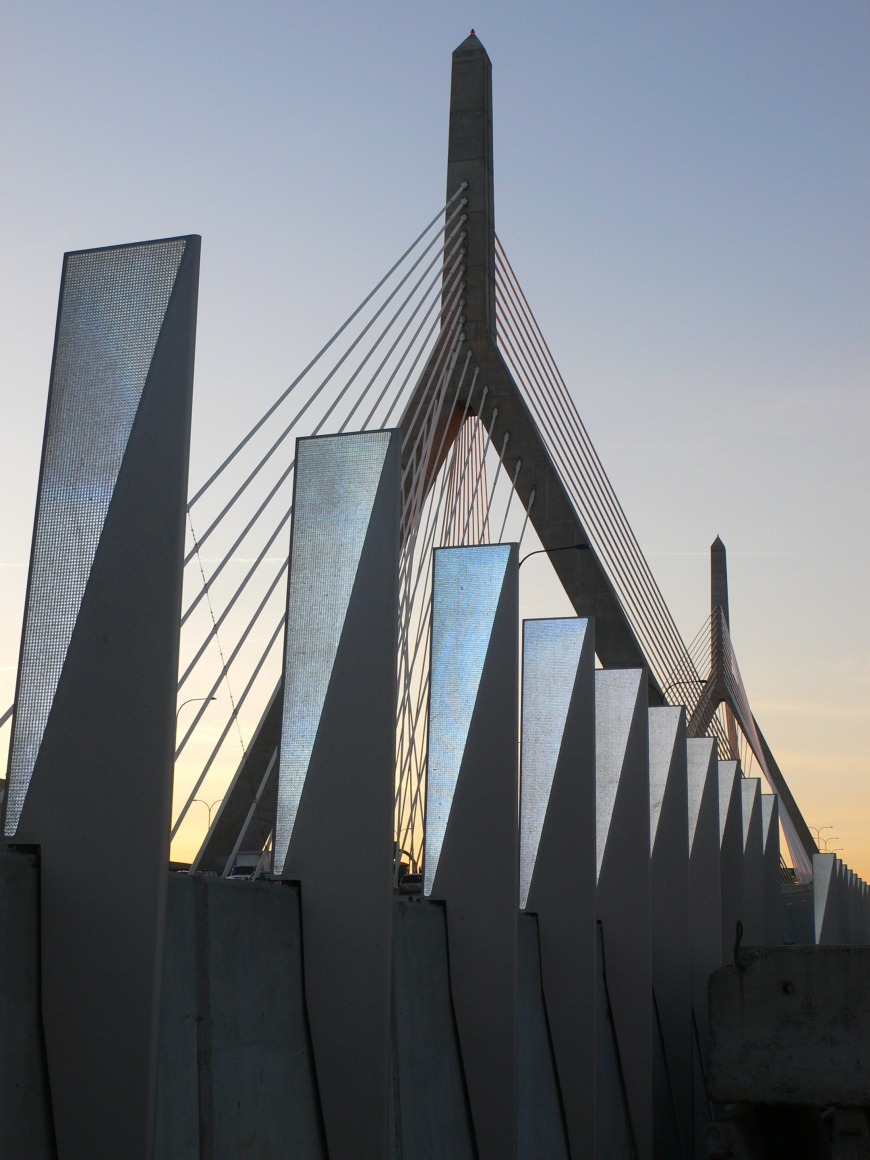A rectangular datum line composed of five hundred fins frames motorists' transition from bridge to tunnel and guides and links pedestrians to the parks and river winding through the site.
LIGHT PORTAL
BOSTON, USA
2007
BackImages
Description
The artwork marks the urban scale transition from the heights of the Leonard P. Zakim Bridge spanning the Charles River from Cambridge, down into the Central Artery Tunnel in Boston’s North End. This enables the 1-93 to pass below downtown Boston but creates a particular challenge where the transition from bridge to tunnel creates a void of more than 600 feet long and 180 feet wide. The Light Portal is an urban intervention that mediates the pedestrian experience of this vast infrastructure, while heightening the motorists experience of the transition.
The Light Portal is a datum line composed of five hundred metal fins attached to a shaped concrete sound barrier wall surrounds the transition from bridge to tunnel. The fins are coated with a printed microprism film which reflects light back to its source. This phenomenon makes the fins glow under the low light conditions and luminously react to the headlights of the cars entering and leaving the tunnel. This phenomenon underscores the experience of transition for the motorists while highlighting the paths through the infrastructure for the pedestrians.
